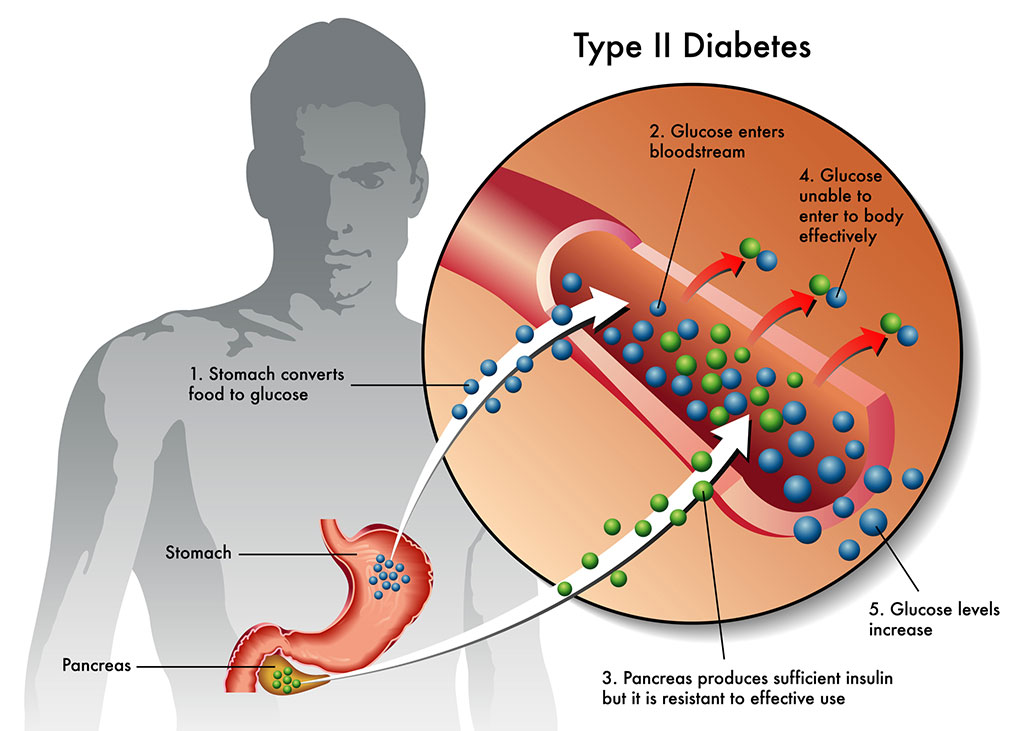Metabolomic Profile Predicts Type II Diabetes Risk for Normal Weight Individuals
Posted on 05 May 2022
Employing a metabolomics approach, a team of Swedish investigator identified a panel of metabolites linked to obesity and found that normal weight individuals with this metabolic profile had increased risk for Type II diabetes and all-cause mortality compared with lean individuals with a healthy metabolome.
The "metabolome" includes four major classes of biological molecules: lipids, proteins/amino-acids, sugars, and nucleic acids.

Obesity is a key risk factor for Type II diabetes; however, up to 20% of diabetes patients are normal weight. Therefore, investigators aimed to identify metabolite patterns that were reproducibly predictive of BMI (body mass index) and subsequently to test whether lean individuals who expressed an obese metabolome were at hidden high risk of obesity-related diseases, such as Type II diabetes.
BMI is a measure of body fat based on height and weight, which is used to evaluate if a person is underweight, of normal weight, or obese. To determine whether they could identify a BMI-linked metabolome, investigators at Lund University (Sweden) measured levels of 108 metabolites associated with Type II diabetes in plasma samples from 7,663 individuals from two Swedish and one Italian population-based cohort. Ridge regression was used to predict BMI using the metabolites.
Individuals with a predicted BMI either higher (overestimated) or lower (underestimated) than their actual BMI were characterized as outliers and further investigated for obesity-related risk factors and future risk of Type II diabetes and mortality.
The participants were divided into five groups based on the relationship between the BMI linked to weight and height and their metabolic BMI. The five groups were (1) individuals with a normal BMI based on weight, height, and metabolism; (2) overweight individuals based on weight, height, and metabolism; (3) obese individuals based on weight, height, and metabolism. (4) Individuals in this group had a normal BMI based on height and weight. Their metabolic BMI had metabolic alterations associated with obesity. (5) Individuals in this group had a metabolic BMI which was lower than their BMI based on weight and height.
Results revealed that the metabolome could predict BMI in all cohorts. The overestimated group had a BMI similar to individuals correctly predicted as normal weight, had a similar waist circumference, were not more likely to change weight over time, but had a two times higher risk of future Type II diabetes and an 80% increased risk of all-cause mortality. These associations remained after adjustments for obesity-related risk factors and lifestyle parameters.
Senior author Dr. Olle Melander, professor of internal medicine at Lund University, said, “We hope that our research will be used to identify individuals with a hidden risk of developing the disease. If we can find these individuals before the disease debuts, we would be able to initiate preventive actions. This could potentially save society a lot of money as Type II diabetes often leads to a variety of different complications.”
The study was published in the March 14, 2022, online edition of the journal Diabetes Care.
Related Links:
Lund University














